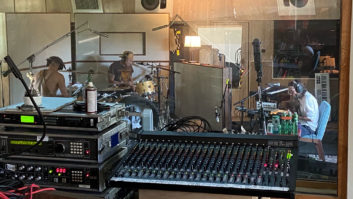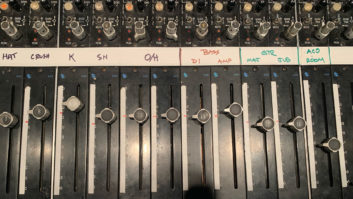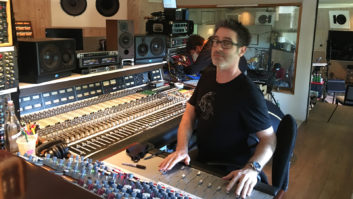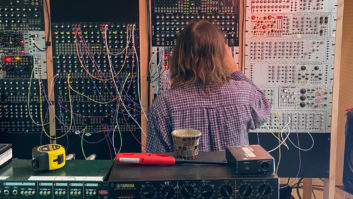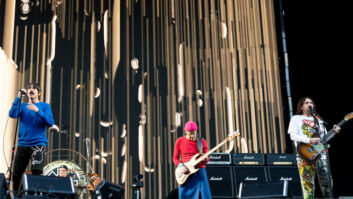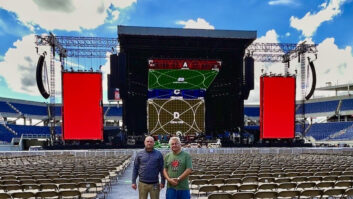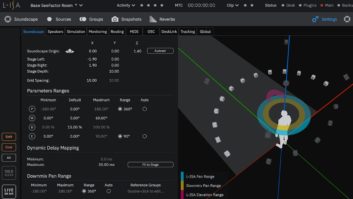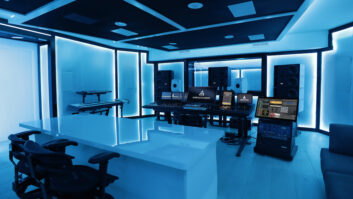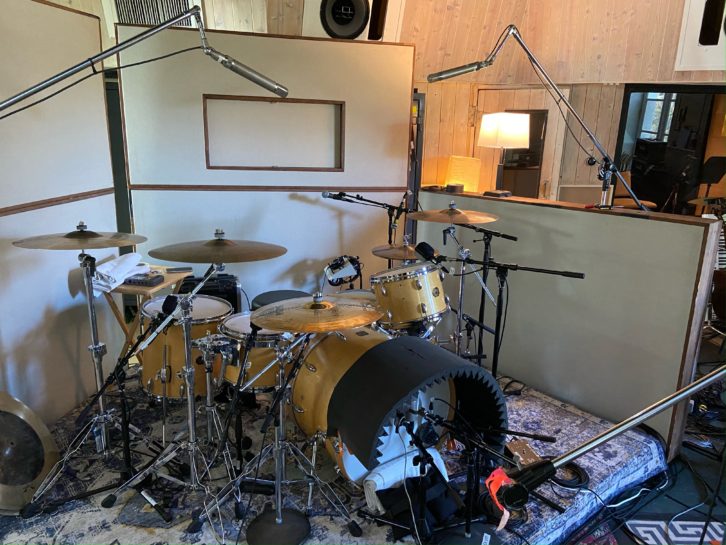
 This was Mix’s most-read article of 2022!
This was Mix’s most-read article of 2022!
The Red Hot Chili Peppers are back with a new hit album, Unlimited Love, that sees guitarist John Frusciante return to the band for the first time in years. To find out how that happened, don’t miss Part 1. In Part 2 below, longtime engineer Ryan Hewitt shares how he captured Chad Smith’s thundering drums, while in Part 3, Frusciante talks playing synths with Flea, while Hewitt discusses capturing bass, guitar and more. In Part 4, Frusciante and Hewitt revel in the challenges—and benefits—of mixing the album old-school analog-style at EastWest Studios. In our final segment, Part 5, Smith, Frusciante and Hewitt discuss some of their favorite songs on Unlimited Love.
BIG, PUNCHY, GROOVY DRUMS
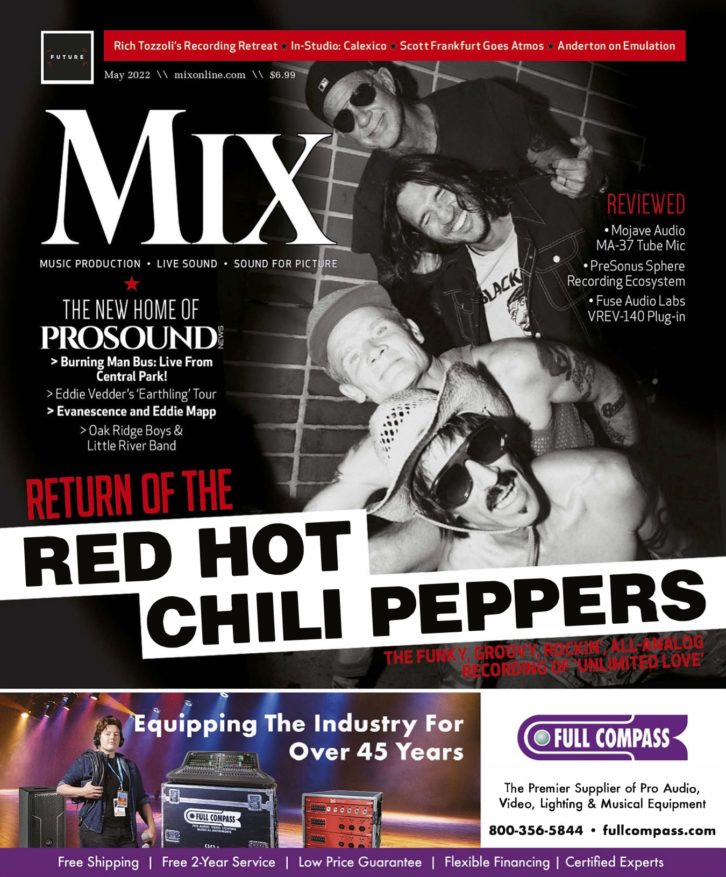 When engineer Hewitt, who has now worked on 10 projects with Frusciante, entered the pre-production setup at Shangri-La that September, he asked if it would be okay to start from scratch. They gave him carte blanche, so they took everything down and cleaned out the room. The foundation became a 1969 API console, a Neve BCM10 sidecar and racks of Neve 1073 preamps, which most of the band went through.
When engineer Hewitt, who has now worked on 10 projects with Frusciante, entered the pre-production setup at Shangri-La that September, he asked if it would be okay to start from scratch. They gave him carte blanche, so they took everything down and cleaned out the room. The foundation became a 1969 API console, a Neve BCM10 sidecar and racks of Neve 1073 preamps, which most of the band went through.
“The thing about the Chili Peppers is you just have to make them sound like the Chili Peppers,” Hewitt states. “It’s literally called, ‘Get the f—k out of the way.’”
While Smith has recorded drums at Shangri-La quite a bit, he says that he’s never properly spent the time searching for the sweet spot to place the kit. As for Hewitt: “I’ve gotten great drum sounds there, but it makes you work for it.” For a couple of days, they tried out myriad drum and mic combinations, settling on a Gretsch set, changing a cymbal here and there, but mostly just switching snare drums out depending on the song.
Rubin suggested that they build a drum riser, which Hewitt says made a huge difference in the sound. Then it was, “Okay, carpet versus no carpet. Carpet was like, ‘Wow!’ All of a sudden, the low end came out of the kick drum into the room like we hadn’t heard in any situation. Now let’s try it in different places on this riser. We found the sweet spot, we put the snare down, we played, and, ‘Okay, cool, there’s our spot, now let’s go through the top three kick drums again.’ We’d make notes about how everything sounded.”
Hewitt, who started out as an assistant engineer with the band 20 years ago, says they tried a bunch of different mics in the kick drum and ended up with an AKG D112 inside and an AKG D12 and Neumann FET 47 on the outside.
“I’d switch my complement of mics all bused down to one track, so if there was a sensitive song, you’d want more of the resonant head than the beater head,” he explains. “We’d change up the balance, and Chad was listening with his headphones. He’d do a take and come in and listen, and he’d say, ‘No, more of this, more of that,’ so we’d dampen this head more, or do this or do that.”
Hewitt placed D12s on the toms, noting: “Chad had his toms wide open, very little damping. That’s another thing we played with. ‘How are we going to dampen the toms and keep them Bonham-esque?’ We want them to sound open, but settle down and not ring all the time. We took off the top heads, and one of my favorite tricks is throwing a handful of cotton balls in the bottom, so when he hits it, the cotton balls go up and then fall down and then the bottom heads don’t resonate anymore.”
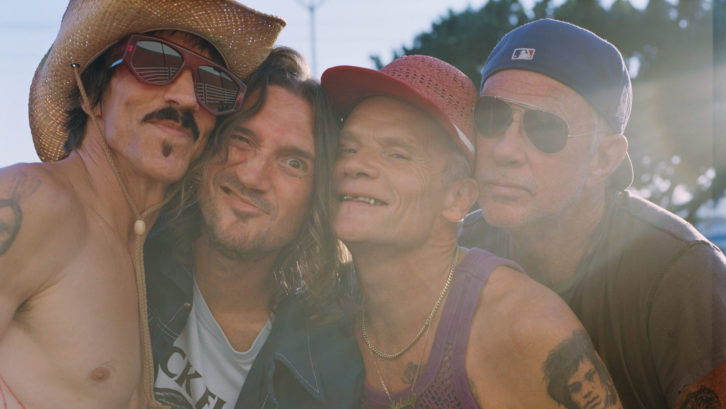
Shure SM57s were placed on the snare, top and bottom, with a 57 on the hi-hat, AKG C12s on the overheads, a Telefunken U-47, for mono room, vintage PZMs on the wall, AEA R88 and Royer 121 ribbon mics, and a “crappy old Sony mic through an Empirical Labs direct box.”
The trick, Hewitt says, is to not overcomplicate things with Smith in the Red Hot Chili Peppers context. There are no samples, and he’s a drummer who hits hard.
“You can’t use a lot of the trash mics that you might use with someone who plays quietly because they will distort,” Hewitt asserts. “Keep it simple, keep it direct and keep it punchy and bright. And here’s a little nugget I’ve learned when you record a tall drummer: You need to use a spaced pair of overheads, pretty far apart, because Chad has a far reach.”
